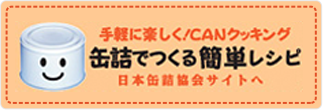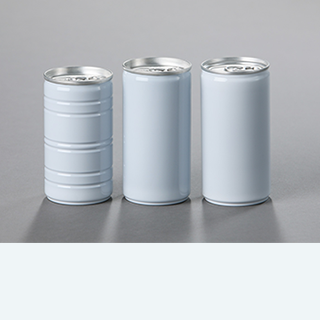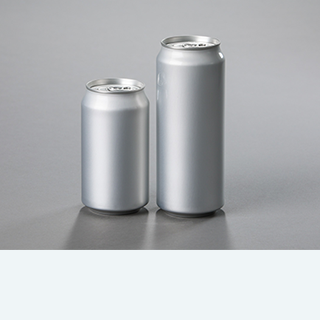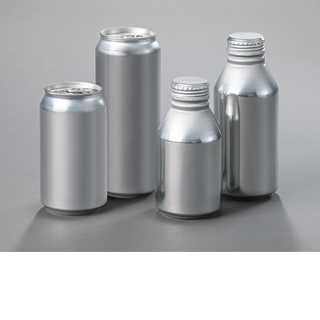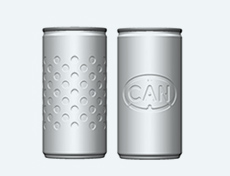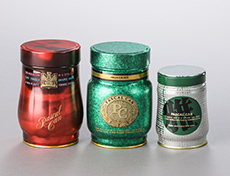Technology
Diamond-Cut Can
1. The purpose of development and background
From destruction to creation: Roots of Diamond-cut Can
The birth of the idea of Diamond-Cut Can dates back to the late 1960s, when Dr. Koryo Miura was researching “PCCP (pseudo-cylindrical concave polyhedral) Shell Concept”. Dr. Miura, who was studying on the destruction of supersonic aircraft fuselage at a NASA laboratory, found various destruction forms and was fascinated by the beautiful geometrical patterns appeared on the broken aircraft bodies.
One day he noticed that there were certain destruction models which made a cracked fuselage stronger against some kinds of external forces than what has not been destructed. He then arrived at an idea that “a new structure can be created by developing an ‘already destructed’ structure.” Thus, the concept of PCCP Shell, the foundation of Diamond-Cut Can, was born literally from “destruction.”
Discovery of the PCCP Shell concept: Reducing weight of metal cans
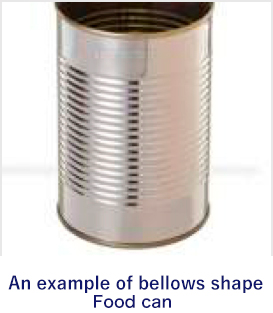
In the early 1980s, a researcher at our Corporate R&D, the basic R&D organization of the Toyo Seikan Group, was closely studying the previously mentioned PCCP Shell as an replacement of the “bellows shape (with lateral beads)”, which was at the time a mainstream measure for reducing the can weight.
His team developed a sample can, and found that its paneling strength* was three times stronger than the standard can and that, unlike the bellows shape, it also had sufficient strength against axial load. Hidden behind the elegant form was a key to can weight reduction and thinning down can side wall.
*Paneling strength: The strength to prevent inward bent of cylinders. It varies by the thickness of can sidewall.
Integration with TULC
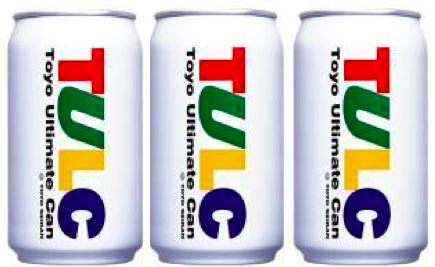
At the beginning of development of the production system, the initial target was 3-piece cans. However, since it was difficult to maintain the quality of can body side seam, the development was shelved two years later. Sometime later, with the emergence of TULC, a vacuum 2-piece can without can body side seam, the commercialization of PCCP Shell became a reality.
2. Features of Diamond-cut Can
Features of steel Diamond-cut Can
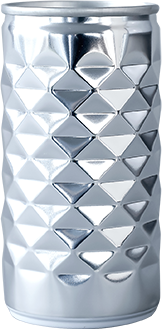
Improvement of paneling strength
We conducted a comparison test between a straight can (can with flat sidewall) and a Diamond-Cut Can, both of which were seamed with ends and submerged in water to evaluate the strength against water pressure.
The result was that the straight can started collapsing at the depth of about 8 meters and completely collapsed at 15 meters, while the Diamond-Cut Can with PCCP Shell remained completely intact at 15 meters, and finally collapsed at 30 meters. This revealed that the paneling strength of Diamond-Cut Can surpassed the straight can by three-fold.
*Paneling strength: The strength to prevent inward bent of cylinders. It varies by the thickness of can sidewall.
30%* weight reduction
From the standpoint of environmental protection and reduction of production cost, the issue of “how to achieve source reduction” is the eternal challenge for packaging containers.
*As compared to our own products
Characteristic design
The structure of PCCP Shells, mathematically derived from the aim of creating a cylindrical shape from an aggregation of straight lines, is a form born from rationality. Magically, this rationality also creates mystic beauty like a sculpture. The pseudo-cylindrical shape unexpectedly possesses the additional feature of being not slippery in hands and very easy to hold.
On the graphics design side, this characteristic shape renders a new package design with deep, three-dimensional appearance that could not be attained with conventional straight cans, resulting in a huge advantage on the shelf in terms of display effect, as well known.
Features of aluminum Diamond-cut Can
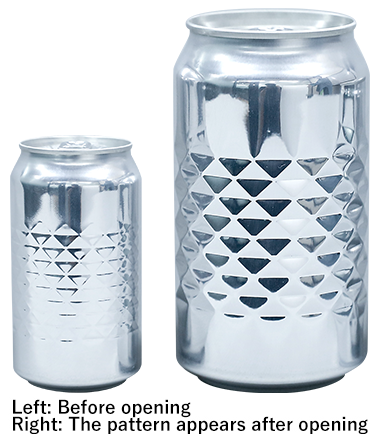
The diamond-cut pattern appears with a pop when the can opens, surprising consumers. Before opening, the carbon dioxide in the content pushes can sidewall outward, so the pattern is not apparent. But once the can opens, the carbon dioxide is released, making the pattern distinctive.
There is also a feeling of flashy sparkling with the reflection of light from the bright aluminum surface, serving as a tool to effectively express ice-cold image of the products.
Contact us
Return to Technologies





